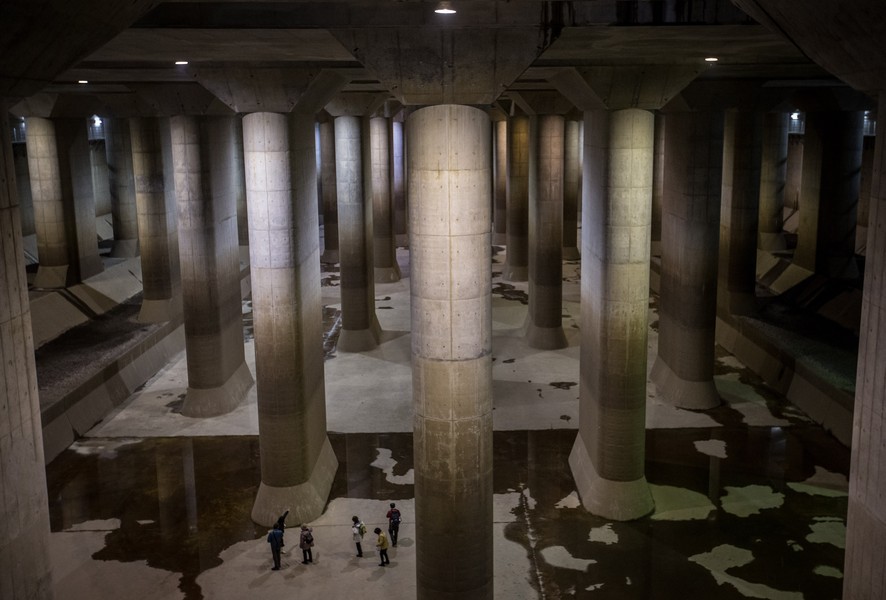
Japońskie władze, podjęły decyzję o budowie
gigantycznego kompleksu
podziemnych korytarzy i zbiorników pod Tokio, po powodzi, jaka
nawiedziła ich stolicę w 2001 roku. W wyniku tajfunu pod wodą znalazło
się wówczas ponad 10 tys. hektarów ziemi, a fala zalała ponad 30 tys.
domów położonych w dolnych partiach japońskiej stolicy. Inwestycja pod północną częścią Tokio rozpoczęła się w 2004 roku i zakończyła 3 lata później.
System przeciwpowodziowy spełnia swoje zadanie nie tylko podczas
powodzi. Na co dzień instalacja zbiera nadmiar deszczówki oraz wodę z
wezbranych rzek.
W centralny miejscu kompleksu znajduje się gigantyczny zbiornik
nazwany „Podziemną Świątynią”. Budowla imponuje swoimi rozmiarami: jest
szeroka na 78 m, długa na 177 m i głęboka na 25,4 m. Zbiornik umacnia 59
filarów- stąd właśnie skojarzenie ze świątynią. Przy zbiorniku
zamontowano pompy. Urządzenia są w stanie wypompować 200 ton wody na
sekundę, a w ciągu minuty pięciu basenów olimpijskich.
Woda jest transportowana przez system kanałów. Każdy z nich ma długość 6,4 kilometra. Nadmiar wylewany jest do rzeki Edo.
Japoński system przeciwpowodziowy kosztował blisko trzy miliardy
dolarów. Mieszkańcy Tokio twierdzą, że inwestycja już się zwróciła.
Każdego roku w stolicę Japonii uderzają tajfuny i burze. Część z nich ma
siłę Sandy, która spustoszyła Nowy Jork w 2012 roku. Dla porównania jeden dzień
walki ze skutkami huraganu w amerykańskiej metropolii to straty rzędu
200 mln dolarów.
Japanese
authorities have taken a decision to build a giant complex of
underground tunnels and reservoirs beneath Tokyo, after a flood that
hit the capital in 2001. As a result of the typhoon more than 10 thousand hectares of land were under water, and the wave inundated more than 30 thousand houses located in the lower parts of the Japanese capital. The investment in the northern part of Tokyo began in 2004 and ended three years later.
The anti-flood system fulfills its task, not only during the flood. Every day installation collects excess rainwater and water from overflowing rivers.There is a giant tank called "Underground Temple" in the central location of the complex . The building impresses with its size: it is 78 m in width, 177 m long and its deep is 25.4 m. The reservoir strengthens 59 columns- hence the association with the temple. There are pumps mounted by the tank. The devices are able to pump out 200 tons of water per second and five Olympic swimming pools per minute.The water is transported through the channel system. Each of them has a length of 6.4 kilometers. The excess of water is poured into the river Edo.
The anti-flood system fulfills its task, not only during the flood. Every day installation collects excess rainwater and water from overflowing rivers.There is a giant tank called "Underground Temple" in the central location of the complex . The building impresses with its size: it is 78 m in width, 177 m long and its deep is 25.4 m. The reservoir strengthens 59 columns- hence the association with the temple. There are pumps mounted by the tank. The devices are able to pump out 200 tons of water per second and five Olympic swimming pools per minute.The water is transported through the channel system. Each of them has a length of 6.4 kilometers. The excess of water is poured into the river Edo.
The Japanese anti flood system costed nearly three billion US dollars. Tokyo residents claim that the investment has already paid for itself. Every year the capital of Japan is hit by typhoons and storms. Some of them have the power of Sandy, which devastated New York in 2012. For comparison, one day fighting the effects of a hurricane in American metropolis is a loss of $ 200 million.
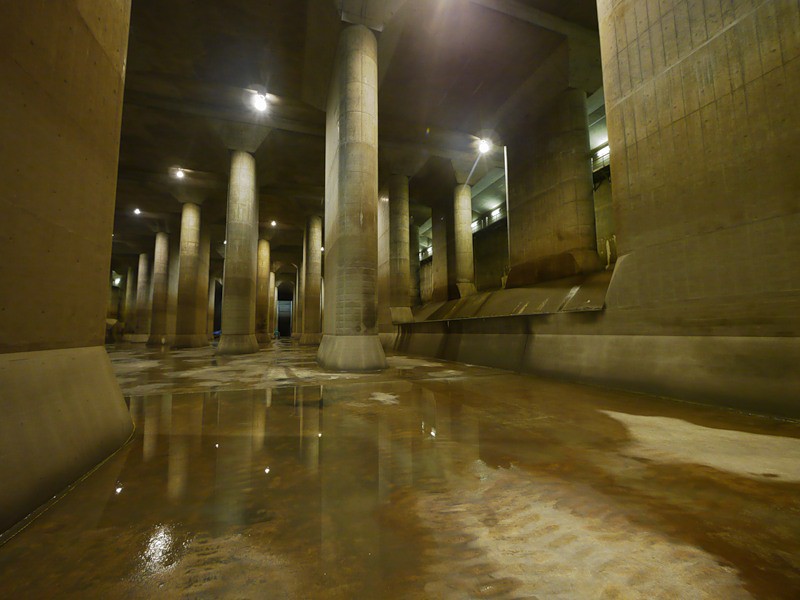
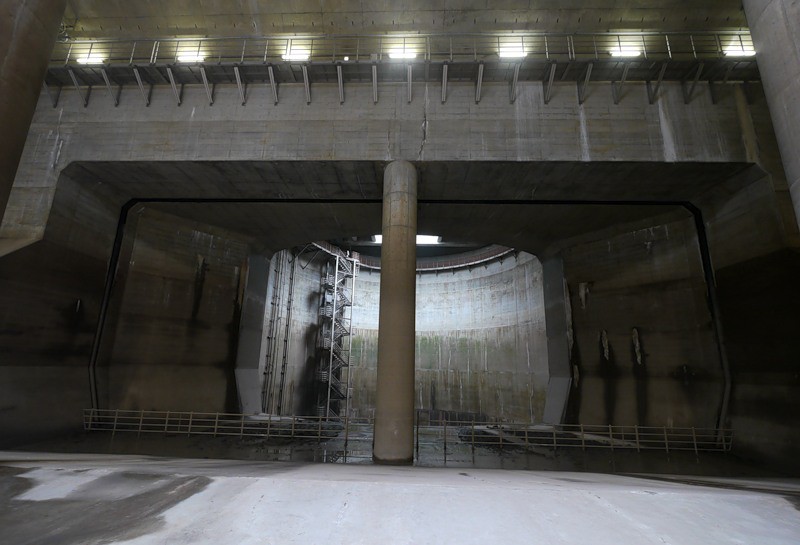
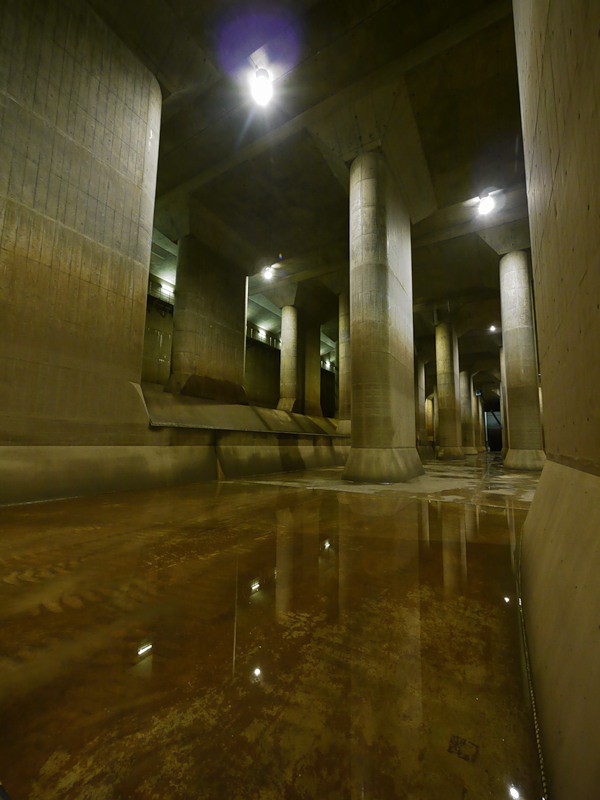
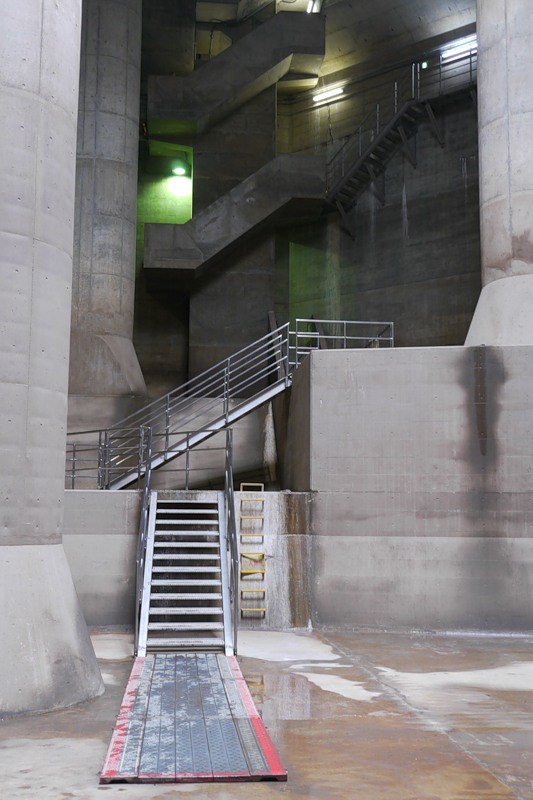
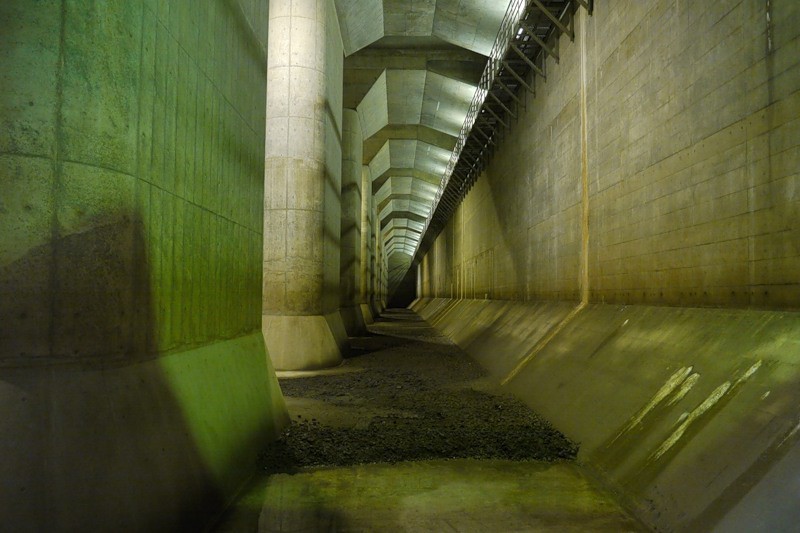
Warto zobaczyć/See also: Drugie życie starych grabi. A second life for the garden rake
Fishki.net/losyziemi.pl

Brak komentarzy :
Prześlij komentarz